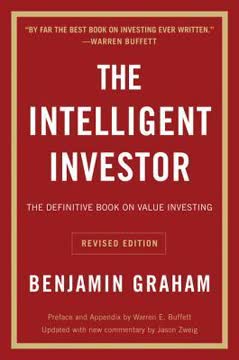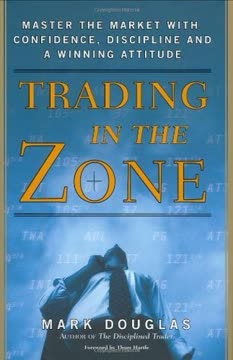Key Takeaways
1. Options basics: Calls, puts, and their characteristics
"Call, put, buy, sell—don't forget these four words."
Fundamental building blocks. Options are contracts giving the right, but not the obligation, to buy (calls) or sell (puts) an underlying asset at a specific price (strike price) before a certain date (expiration). Each option represents 100 shares of the underlying stock. Key characteristics include:
- Premium: The price paid for the option
- Strike price: The price at which the option can be exercised
- Expiration date: When the option contract ends
Moneyness matters. Options can be:
- In-the-money (ITM): Option has intrinsic value
- At-the-money (ATM): Strike price equals current stock price
- Out-of-the-money (OTM): Option has no intrinsic value, only time value
Understanding these basics is crucial for all option strategies and risk management.
2. Selling covered calls: A conservative income strategy
"When you sell covered calls, you are renting your stocks to other people (option buyers), and they pay you for the privilege."
Generate income from stocks. Selling covered calls involves selling call options on stocks you own. This strategy provides regular income and can enhance overall portfolio returns. Key benefits include:
- Income generation: Receive premiums from selling calls
- Potential for capital gains: If stock price rises below strike price
- Downside protection: Premium received offsets potential stock losses
Risk and strategy. The main risk is opportunity cost if the stock price rises significantly above the strike price. To implement:
- Choose stocks you're willing to sell
- Select strike prices above current stock price
- Pick expiration dates aligning with your outlook
- Monitor positions and adjust as needed
Covered calls are ideal for slightly bullish or neutral market outlooks.
3. Buying calls: Leveraging bullish expectations
"For a fraction of what it costs to buy stocks, you can leverage your money with a possibility to double, triple, or quadruple your initial investment."
High-reward, high-risk strategy. Buying calls allows investors to profit from rising stock prices with less capital than buying stocks outright. This leverage can lead to significant gains if the stock price moves favorably. Key considerations:
- Limited risk: Maximum loss is the premium paid
- Unlimited potential profit: Gains increase as stock price rises
- Time decay: Options lose value as expiration approaches
Successful implementation. To increase chances of success:
- Choose stocks with strong upward momentum
- Select strike prices and expiration dates carefully
- Consider implied volatility when pricing options
- Have a clear exit strategy for both profits and losses
Remember, while potential returns are high, most options expire worthless. Use this strategy judiciously.
4. Buying puts: Profiting from bearish moves and hedging
"Puts are your friend."
Dual-purpose strategy. Buying puts allows investors to profit from falling stock prices or protect existing long stock positions. This versatility makes puts a valuable tool for both speculation and risk management.
Speculation use:
- Profit from bearish market outlooks
- Limited risk compared to short selling
- Potential for significant gains in market downturns
Hedging use:
- Protect individual stocks or entire portfolios
- Act as "insurance" against market crashes
- Maintain upside potential while limiting downside risk
When buying puts, consider:
- Stock's downside potential
- Time until expiration
- Implied volatility and its impact on option pricing
- Your risk tolerance and overall portfolio strategy
Puts offer flexibility in bearish markets or uncertain economic conditions.
5. Understanding option pricing and volatility
"Volatility is that elusive factor that causes traders to lose money even when correctly predicting stock direction and timing."
Complex but crucial. Option pricing is influenced by multiple factors, with volatility playing a significant role. Key components of option pricing:
- Intrinsic value: Amount option is in-the-money
- Time value: Remaining premium above intrinsic value
- Implied volatility: Market's expectation of future stock price movement
Volatility's impact. High implied volatility increases option prices, while low volatility decreases them. This affects both buyers and sellers:
- Buyers: Pay more for options during high volatility periods
- Sellers: Receive higher premiums but face increased risk
Understanding these factors helps traders:
- Identify potentially overpriced or underpriced options
- Adjust strategies based on current market conditions
- Manage risk more effectively in various market environments
Mastering option pricing and volatility is essential for consistent success in options trading.
6. Advanced strategies: Spreads, straddles, and strangles
"Spreads are a very powerful tool. If used properly, the tool can help build a beautiful house that provides income and security. If not used properly, that tool can cause the whole house to collapse into rubble."
Sophisticated techniques. Advanced strategies allow traders to profit from various market conditions and manage risk more precisely. Key strategies include:
Spreads:
- Vertical spreads: Simultaneous buy and sell of options with same expiration, different strikes
- Calendar spreads: Same strike, different expirations
- Iron condors: Combination of bull put and bear call spreads
Straddles and strangles:
- Straddles: Simultaneous purchase of ATM call and put with same expiration
- Strangles: Similar to straddles but using OTM options
These strategies offer:
- Defined risk-reward profiles
- Ability to profit in various market conditions
- Opportunities for more precise position management
However, they require a deeper understanding of options mechanics and careful risk management.
7. Risk management and the Greeks in options trading
"Delta is often referred to as a hedge ratio because it tells you how many shares of stock you need to sell when buying one call option (or how many shares to buy when buying one put option) in order to have a delta-neutral (i.e., market-neutral) position."
Essential tools for traders. The Greeks provide crucial information about how option prices change in response to various factors. Key Greeks include:
- Delta: Rate of change in option price relative to underlying asset price
- Gamma: Rate of change in delta
- Theta: Time decay of option value
- Vega: Sensitivity to changes in implied volatility
Understanding the Greeks allows traders to:
- Assess and manage risk more effectively
- Create delta-neutral positions
- Anticipate how option prices will change under various scenarios
Proper risk management using the Greeks is crucial for long-term success in options trading.
8. Options on ETFs, indexes, and weekly options
"Instead of buying and selling options on individual stocks, you can hedge long positions with exchange-traded funds (ETFs) such as SPY, DIA, IWM, or QQQ."
Expanded trading universe. Options on ETFs, indexes, and weekly options provide additional tools for traders to implement their strategies. Benefits include:
ETF and index options:
- Broad market exposure
- Lower volatility than individual stocks
- Effective for hedging portfolios
Weekly options:
- Short-term trading opportunities
- Lower premiums due to reduced time value
- Increased flexibility for position management
These instruments allow traders to:
- Implement macro-level strategies
- Hedge entire portfolios efficiently
- Take advantage of short-term market movements
However, they also require careful consideration of liquidity, volatility, and time decay.
9. The importance of practice and continuous learning
"If you are serious about trading options, it's essential that you understand volatility and options pricing."
Never-ending journey. Successful options trading requires ongoing education and practice. Key aspects of continuous improvement:
- Paper trading: Practice strategies without risking real money
- Analyzing past trades: Learn from both successes and failures
- Staying informed: Keep up with market trends and new strategies
Traders should focus on:
- Developing a deep understanding of option mechanics
- Improving risk management skills
- Adapting strategies to changing market conditions
Remember, even experienced traders continue to learn and refine their approach. Stay humble, remain curious, and always be willing to adapt your strategies as you gain more knowledge and experience in the complex world of options trading.
Last updated:
FAQ
What is "Understanding Options 2E" by Michael Sincere about?
- Comprehensive options introduction: The book offers a step-by-step guide to options trading, starting from the basics and progressing to advanced strategies, making it accessible for beginners and intermediate traders.
- Practical and approachable: Michael Sincere uses clear language, real-world examples, and a conversational tone to demystify options, focusing on practical knowledge and actionable advice.
- Wide strategy coverage: It covers everything from opening an options account to executing strategies like covered calls, spreads, iron condors, and more.
- Educational resources: The book includes interviews with professionals and provides additional resources for further learning.
Why should I read "Understanding Options 2E" by Michael Sincere?
- Clear and engaging style: The book is written in an easy-to-understand, entertaining manner, avoiding technical jargon and making complex concepts accessible.
- Covers essential concepts: It explains key options concepts such as strike price, expiration, intrinsic and time value, and the Greeks, which are crucial for understanding and trading options.
- Practical trading skills: Readers learn how to execute trades, manage risk, and develop trading plans, with a focus on discipline and avoiding common mistakes.
- Free expert support: Michael Sincere offers a toll-free number and online chat for readers to get answers to their options questions.
What are the key takeaways from "Understanding Options 2E" by Michael Sincere?
- Options are flexible tools: Options can be used for income, protection, hedging, and speculation in any market condition, with known risk and potential for profit in rising, falling, or sideways markets.
- Risk management is crucial: The book emphasizes the importance of understanding risk, using conservative strategies, and having a trading plan.
- Volatility matters: Understanding volatility and its impact on option pricing is essential for successful trading.
- Continuous learning: Sincere encourages starting small, practicing strategies, and using free educational resources rather than relying on expensive seminars.
How do I open an options account as described in "Understanding Options 2E" by Michael Sincere?
- Start with a brokerage account: Open a brokerage account with a minimum deposit, typically around $2,500, before applying for options trading.
- Complete the options agreement: The brokerage will assess your knowledge, experience, and financial resources to determine your approval level for different options strategies.
- Understand margin and disclosures: Advanced strategies may require a margin account, and you must read the "Characteristics and Risks of Standardized Options" brochure before trading.
- Approval levels: Approval ranges from basic covered calls to advanced naked options, depending on your experience and financial situation.
What is a covered call and why does Michael Sincere emphasize it in "Understanding Options 2E"?
- Definition and purpose: A covered call involves selling call options on stocks you already own, generating income by collecting premiums from option buyers.
- Conservative strategy: It is considered a conservative, income-generating strategy suitable for flat or slightly bullish markets.
- Risk and reward: You keep the premium and may gain dividends and capital appreciation up to the strike price, but your stock can be called away if the option is exercised.
- Key considerations: Choosing the right strike price and expiration date is crucial to balance income and potential stock appreciation.
How does Michael Sincere recommend choosing and selling covered calls in "Understanding Options 2E"?
- Market environment matters: Covered calls work best in stable or slowly rising markets with less volatile stocks.
- Strike price and premium: Select a strike price that offers a reasonable premium while allowing for some stock appreciation; out-of-the-money calls are often preferred.
- Expiration and stock selection: Longer expirations provide higher premiums but tie up capital; choose steady, reliable stocks and avoid highly volatile ones.
- Execution and management: Use limit orders to sell calls, monitor positions, and be prepared to buy back or roll options if market conditions change.
What is assignment in options trading and how should it be handled according to "Understanding Options 2E"?
- Definition of assignment: Assignment occurs when the option buyer exercises their right, obligating the seller to deliver the underlying stock at the strike price.
- Timing of assignment: It usually happens at expiration if the option is in the money, but can occur early, especially before dividends.
- Seller's perspective: Assignment is generally positive for covered call sellers, as it means the stock was sold at an acceptable price.
- Preparation: Sellers should always be prepared for assignment and have a plan for handling it.
How does "Understanding Options 2E" by Michael Sincere explain buying call options and their risks?
- Leverage and low cost: Buying calls allows you to control stock for a fraction of the price, offering the potential for large percentage gains if the stock rises.
- High risk and timing: The main risk is losing 100% of the premium if the stock does not move above the strike price before expiration; timing and price paid are critical.
- Bid-ask spread impact: Wide spreads can cause immediate losses; using limit orders and monitoring spreads is essential to avoid overpaying.
- Importance of volatility: High implied volatility can inflate premiums, increasing the risk of losses if volatility drops after purchase.
What are the key strategies for buying puts in "Understanding Options 2E" by Michael Sincere?
- Speculation and hedging: Buying puts is used to profit from declining stock prices or to hedge long stock positions as "disaster insurance."
- Selecting the right put: Choose puts based on market environment, stock technicals, and strike price, balancing cost and probability of profit.
- Managing positions: Monitor the underlying stock and decide when to sell, hold, or exercise puts; selling profitable puts before expiration helps avoid time decay.
- Risk awareness: Holding losing puts can lead to total loss of premium, so risk management is essential.
How does volatility affect options pricing according to "Understanding Options 2E" by Michael Sincere?
- Premium components: Option price consists of intrinsic value and time value, with time value heavily influenced by volatility and time until expiration.
- Historical vs. implied volatility: Historical volatility measures past price movement, while implied volatility reflects market expectations and directly affects option premiums.
- Volatility crush risk: Buying options with high implied volatility (e.g., before earnings) can lead to losses if volatility drops after the event.
- Strategy implications: Understanding volatility helps traders avoid overpaying and choose appropriate strategies.
What are credit and debit spreads, and how are they used in "Understanding Options 2E" by Michael Sincere?
- Definition of spreads: Spreads involve buying and selling options of the same type with different strike prices but the same expiration, reducing risk and cost.
- Credit spreads: These bring in premium upfront and include strategies like bull put and bear call spreads, which limit both risk and reward.
- Debit spreads: These require a net cost and include bull call and bear put spreads, offering directional exposure with limited risk.
- Managing spreads: The book explains strike selection, calculating breakeven, and managing trades for both types of spreads.
How does "Understanding Options 2E" by Michael Sincere explain the Greeks and their importance?
- Overview of the Greeks: Delta, gamma, theta, vega, and rho measure how option prices respond to changes in stock price, time, volatility, and interest rates.
- Delta's significance: Delta estimates how much an option price changes with a $1 move in the stock and approximates the probability of finishing in the money.
- Other Greeks' roles: Gamma measures the rate of change of delta, theta represents time decay, vega measures sensitivity to volatility, and rho relates to interest rates.
- Risk management: Understanding the Greeks helps traders manage risk and make informed decisions.
What advanced options strategies does Michael Sincere cover in "Understanding Options 2E" (iron condors, calendar spreads, butterflies)?
- Iron condors: A market-neutral strategy combining a put credit spread and a call credit spread, profiting if the stock stays within a range, with limited risk and reward.
- Calendar spreads: Involve buying and selling options with the same strike price but different expirations to exploit time decay differences; can be directional or neutral.
- Butterfly spreads: Combine bull and bear spreads to create a position with limited risk and profit, ideal for low volatility environments.
- Strategy selection: The book explains setup, strike selection, and the importance of understanding time premium and volatility for these advanced strategies.
Review Summary
Understanding Options receives mostly positive reviews, praised for its clear explanations of complex topics for beginners. Readers appreciate the author's approachable style and humor. Some criticize it for being too basic or repetitive, while others find it comprehensive. The book is recommended as an excellent introduction to options trading, though more experienced traders may find it elementary. Many readers feel more confident in options trading after reading, but some caution against oversimplification of complex strategies.
Similar Books










Download PDF
Download EPUB
.epub digital book format is ideal for reading ebooks on phones, tablets, and e-readers.







